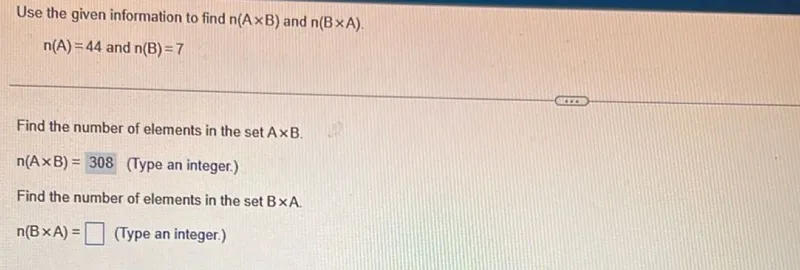Questions: Use the given information to find n(A × B) and n(B × A). n(A)=44 and n(B)=7 Find the number of elements in the set A × B. n(A × B)=308 (Type an integer.) Find the number of elements in the set B × A. n(B × A)= (Type an integer.)

Transcript text: Use the given information to find $n(A \times B)$ and $n(B \times A)$.
\[
n(A)=44 \text { and } n(B)=7
\]
Find the number of elements in the $\operatorname{set} A \times B$.
\[
n(A \times B)=308 \text { (Type an integer.) }
\]
Find the number of elements in the $\operatorname{set} B \times A$.
\[
n(B \times A)=\square \text { (Type an integer.) }
\]





